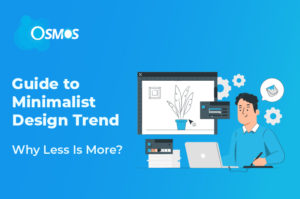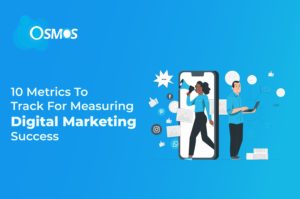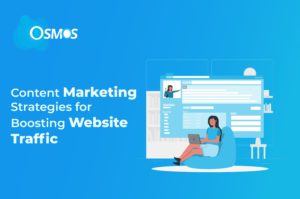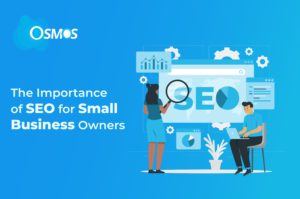With the help of inbound marketing, many businesses have created engaging and cost-effective channels. The foundations of inbound marketing are made on the principle of trust. Many digital firms have moved away from irritating ads and switched to more rewarding inbound marketing campaigns.
If your business has not adopted inbound marketing yet, you’re missing out on a rewarding opportunity. We have tailored an insightful guide to help you better understand inbound marketing.
What is Inbound Marketing?
Inbound marketing is one of the most effective marketing strategies, which focuses mainly on engaging customers through relevant content. Businesses target customers’ needs and interests to craft reader-friendly content.
The approach proves vital in gaining customers’ trust due to helpful and valuable information. With inbound marketing, the marketers first attract the right audience and gradually convert them into long-term loyal customers. The interactions between the customers and business are emotionally connected, which helps them gain and retain customers.
Inbound VS Outbound Marketing
Outbound marketing is relatively different from inbound marketing since it adopts a direct approach to reach out to clients to sell their products and services. In outbound marketing, communication is only one-way.
It is a decent option for businesses looking for quick cash flows since it may generate faster leads. However, many firms combine them for healthy returns on investment.
3 Stages of Inbound Marketing
Altogether, there are three stages of inbound marketing. These stages are often referred to as the buyer’s journey. You can read briefly about these stages below:
-
Attracting
The first phase of inbound marketing involves targeting and attracting the appropriate audience. Businesses often attract potential customers through helpful and relevant content. While crafting the content, the business ensures that it matches the customer’s profile and appeals to the target audience.
For better reach, they often use the help of SEO. It helps them get organic visitors to their website, which leads to long-term customers. Search engines such as Google prefer quality and helpful content and rank it better compared to others. SEO has significance since it is free and sustainable in driving traffic.
-
Engaging
After the business has attracted considerable traffic, the next step will be to keep them engaged. The firms keep them engaged by providing insights and strategies. The prime focus is on keeping the audience intrigued with the help of valuable content rather than sales.
Businesses offer solutions instead of promoting their products or services. It enables them to appear trustworthy and reliable in the eyes of prospects.
-
Selling
At this point, businesses learn the art of selling without selling. These methods delight most prospects and encourage them to seek your services. Once they become their customers, the firms continue to work with them closely to make them loyal customers.
Whenever a business helps the customer achieve their target, it results in additional customers through word of mouth. Altogether, the strategy help creates a sustainable environment, which is integral for growth.
Best Practices of Inbound Marketing
-
Content Marketing
Content marketing focuses on creating valuable content for the audience that helps drive profitable actions. It is one of the most common strategies that businesses adopt in inbound marketing. Some of the notable examples include:
- Blogs and Articles
- Testimonials and Reviews
- Podcasts and Videos
- Case Studies and Info graphics
With the help of these resources, businesses create trust and authority. Since they target the customer’s pain point, they can drive a healthy ROI. Moreover, content marketing also helps in increasing conversions.
-
Search Engine Optimization (SEO)
Statistics show that over 85% of customers look up the product or service online before purchasing. Therefore, ranking on search engines is one of the core principles for a successful inbound marketing campaign. Firms practice SEO to get their website to the first page of search results.
SEO can bring numerous benefits to the business including sustainable traffic, higher revenue and conversion rates. Occasionally, businesses need to run paid campaigns along with SEO for optimum results.
Typically SEO is divided into three different aspects, such as:
-
On-page SEO
On-page SEO concerns itself with driving traffic with the help of targetted keywords and FAQs. They use tools such as Ahrefs to improve their keyword strategy and craft SEO-friendly content. They make the best out of keywords and do not overstuff them in their website since it hinders the ranking.
-
Off-Page SEO
This type of SEO enables the business to bring traffic from external sources. Usually, they use the help of backlinks and guest-posting to maximize their reach. Google and other search engines prefer backlinks from high-quality sources and use them as a metric to determine the overall ranking.
-
Technical SEO
SEO performance significantly relies on the website overall structure and functionality. Technical aspects such as the slow loading speed and broken links may harm the overall ranking. Businesses hire talented individuals who help in setting up a steady website.
-
Social Media Presence
Users on social media platforms have grown exponentially over the year, which has encouraged businesses to enhance their digital presence. These platforms drive significant revenue since the company can reach millions of prospects.
Businesses often create a social media strategy to help them reach the pre-set goals. They often have to make different strategies for different social platforms to achieve optimum results.
-
Optimized Landing Page
Businesses focus on a landing page since it is the first thing prospects see as they enter the website. A well-optimized and created landing page will result in more conversion. Occasionally, they display offers on the landing page and write a converting copy.
-
Email Marketing
Email marketing can prove to be significant, especially for smaller businesses. With the help of email marketing, companies reach plenty of prospects and convert them into long-term customers.
Moreover, businesses have also started to incorporate automation into email marketing. With the help of CRM and automation, businesses can adopt a personalized approach.
Final Thoughts
Looking at inbound marketing as a whole, it can prove to be a great asset for a business. It requires low investment and offers high returns, which makes it an ideal choice for smaller firms.







